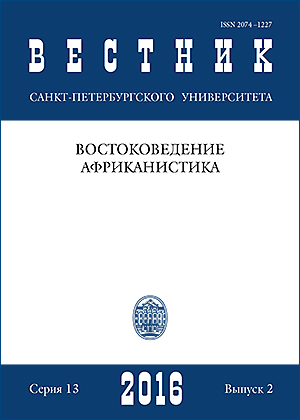The Problem of Suicide and Double Suicide in Contemporary Japanese Literature
DOI:
https://doi.org/10.21638/11701/spbu13.2016.208Abstract
This paper explores the problem of suicide and double suicide in contemporary Japanese literature. Characters from fourteen stories are under consideration, with respect to categories such as shame, guilt, and retribution. Based on stories of six popular Japanese writers (Hoshi Shinichi’s “The Overtaking”, Atōda Takashi’s “The Hair”, “The Ghost of the Office”, “The Red Dress”, “The Visitor” and “The God of Happiness”, Akagawa Jirō’s “The Double Suicide”, “Let’s Shock”, “The Dancing Man”, “The Gossip” and “The New Worker”, Miyabe Miyuki’s “Don’t Say Anything”, Otsuichi’s “Ishinome”, and Isaka Kōtarō’s “Grasshopper”) I analyse characteristic features of these “suicide” stories in the Japanese literature of the last four decades.
Keywords:
contemporary Japanese literature, suicide, double suicide, shame, guilt, retribution
Downloads
References
Aino University, Faculty of Nursing and Rehabilitation, Department of Occupational Therapy journal, 2010, no. 24, pp. 75–87. (In Japanese)
Downloads
Published
How to Cite
Issue
Section
License
Articles of "Vestnik of Saint Petersburg University. Asian and African Studies" are open access distributed under the terms of the License Agreement with Saint Petersburg State University, which permits to the authors unrestricted distribution and self-archiving free of charge.





